1.Identification
1.1 GHS Product identifier
| Product name | MCPA-sodium |
|---|
1.2 Other means of identification
| Product number | - |
|---|---|
| Other names | Dicotex |
1.3 Recommended use of the chemical and restrictions on use
| Identified uses | For industry use only. |
|---|---|
| Uses advised against | no data available |
1.4 Supplier's details
| Company | MOLBASE (Shanghai) Biotechnology Co., Ltd. |
|---|---|
| Address | Floor 4 & 5, Building 12, No. 1001 North Qinzhou Road, Xuhui District, Shanghai, China |
| Telephone | +86(21)64956998 |
| Fax | +86(21)54365166 |
1.5 Emergency phone number
| Emergency phone number | +86-400-6021-666 |
|---|---|
| Service hours | Monday to Friday, 9am-5pm (Standard time zone: UTC/GMT +8 hours). |
2.Hazard identification
2.1 Classification of the substance or mixture
Acute toxicity - Oral, Category 4
Acute toxicity - Dermal, Category 4
Acute toxicity - Inhalation, Category 4
Hazardous to the aquatic environment, short-term (Acute) - Category Acute 1
Hazardous to the aquatic environment, long-term (Chronic) - Category Chronic 1
2.2 GHS label elements, including precautionary statements
| Pictogram(s) | 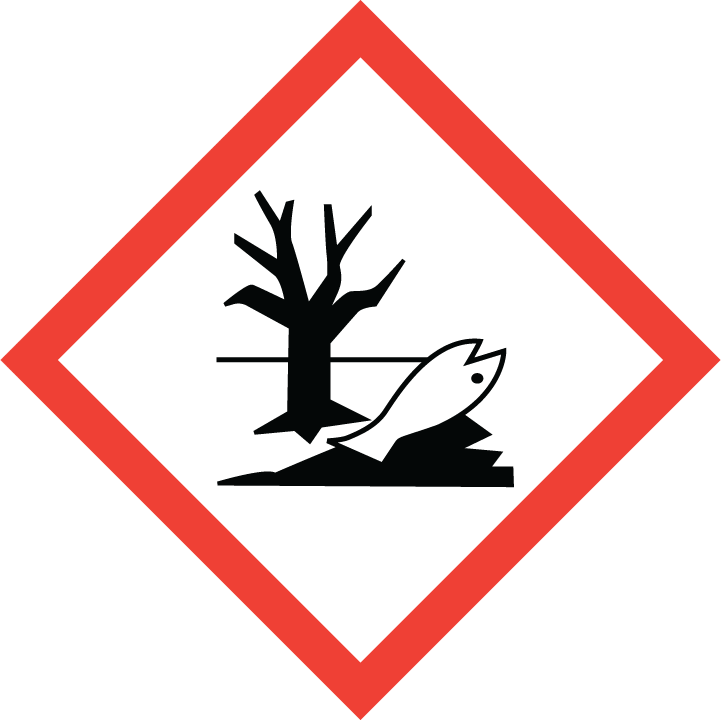 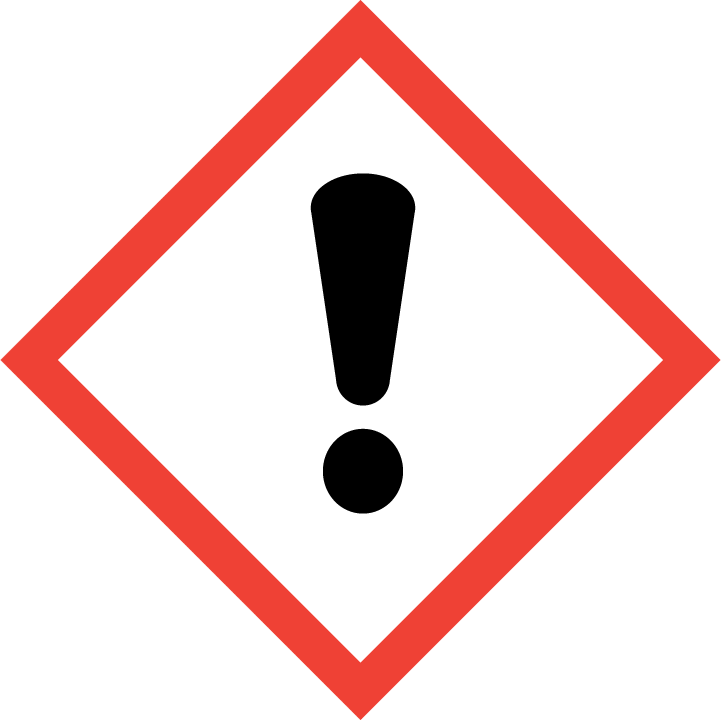 |
|---|---|
| Signal word | Warning |
| Hazard statement(s) | H302 Harmful if swallowed H312 Harmful in contact with skin H332 Harmful if inhaled H410 Very toxic to aquatic life with long lasting effects |
| Precautionary statement(s) | |
| Prevention | P264 Wash ... thoroughly after handling. P270 Do not eat, drink or smoke when using this product. P280 Wear protective gloves/protective clothing/eye protection/face protection. P261 Avoid breathing dust/fume/gas/mist/vapours/spray. P271 Use only outdoors or in a well-ventilated area. P273 Avoid release to the environment. |
| Response | P301+P312 IF SWALLOWED: Call a POISON CENTER/doctor/…if you feel unwell. P330 Rinse mouth. P302+P352 IF ON SKIN: Wash with plenty of water/... P312 Call a POISON CENTER/doctor/…if you feel unwell. P321 Specific treatment (see ... on this label). P362+P364 Take off contaminated clothing and wash it before reuse. P304+P340 IF INHALED: Remove person to fresh air and keep comfortable for breathing. P391 Collect spillage. |
| Storage | none |
| Disposal | P501 Dispose of contents/container to ... |
2.3 Other hazards which do not result in classification
none
3.Composition/information on ingredients
3.1 Substances
| Chemical name | Common names and synonyms | CAS number | EC number | Concentration |
|---|---|---|---|---|
| MCPA-sodium | MCPA-sodium | 3653-48-3 | none | 100% |
4.First-aid measures
4.1 Description of necessary first-aid measures
General advice
Consult a physician. Show this safety data sheet to the doctor in attendance.
If inhaled
If breathed in, move person into fresh air. If not breathing, give artificial respiration. Consult a physician.
In case of skin contact
Wash off with soap and plenty of water. Consult a physician.
In case of eye contact
Rinse thoroughly with plenty of water for at least 15 minutes and consult a physician.
If swallowed
Never give anything by mouth to an unconscious person. Rinse mouth with water. Consult a physician.
4.2 Most important symptoms/effects, acute and delayed
no data available
4.3 Indication of immediate medical attention and special treatment needed, if necessary
Treatment is symptomatic and supportive. Oils should not be used as either cathartics or dermal cleansing agents, as they increase absorption. Gastric lavage and use of activated charcoal and sodium sulfate are indicated for ingestion. If dermal exposure occurred, contaminated clothes should be removed, and the skin should be thoroughly cleansed with soap and water. Management of seizures in both children and adults is with Valium or phenobarbital. Respiratory depression and even respiratory arrest especially with concomitant use of Valium and phenobarbital in children, may occur. These drugs preferably should be used only in critical care areas where emergency endotracheal intubation can be performed. ... Epinephrine can not be utilized in patients with organochlorine poisoning, as the organochlorines induce myocardial irritability and ventricular arrhythmias may occur. However, dopamine may be necessary in the event of hypotension unresponsive to fluid administration, and epinephrin may be necessary in the event of cardiopulmonary arrest. ... In a critically ill patient with unknown insecticide exposure, ... Atropine must be used with caution, as it can cause ventricular irritability, especially when a myocardial irritant such as an organochlorine is present. ... Hematologic, hepatic (especially with endrin, which is markedly hepatotoxic), and renal studies as well as cardiopulmonary monitoring should be carried out in acute intoxication from lindane or other organochlorines for at least 48 to 72 hr. Long term hematologic follow-up is necessary for the patient with lindane intoxication. As the carrier for these agents may be xylene or a petroleum distillate, management also must include observation and treatment for these entities. /Organochlorine pesticides/
5.Fire-fighting measures
5.1 Extinguishing media
Suitable extinguishing media
Use water spray, alcohol-resistant foam, dry chemical or carbon dioxide.
5.2 Specific hazards arising from the chemical
no data available
5.3 Special protective actions for fire-fighters
Wear self-contained breathing apparatus for firefighting if necessary.
6.Accidental release measures
6.1 Personal precautions, protective equipment and emergency procedures
Use personal protective equipment. Avoid dust formation. Avoid breathing vapours, mist or gas. Ensure adequate ventilation. Evacuate personnel to safe areas. Avoid breathing dust. For personal protection see section 8.
6.2 Environmental precautions
Prevent further leakage or spillage if safe to do so. Do not let product enter drains. Discharge into the environment must be avoided.
6.3 Methods and materials for containment and cleaning up
Pick up and arrange disposal. Sweep up and shovel. Keep in suitable, closed containers for disposal.
7.Handling and storage
7.1 Precautions for safe handling
Avoid contact with skin and eyes. Avoid formation of dust and aerosols. Avoid exposure - obtain special instructions before use.Provide appropriate exhaust ventilation at places where dust is formed. For precautions see section 2.2.
7.2 Conditions for safe storage, including any incompatibilities
Keep in well-ventilated area.
8.Exposure controls/personal protection
8.1 Control parameters
Occupational Exposure limit values
no data available
Biological limit values
no data available
8.2 Appropriate engineering controls
Handle in accordance with good industrial hygiene and safety practice. Wash hands before breaks and at the end of workday.
8.3 Individual protection measures, such as personal protective equipment (PPE)
Eye/face protection
Safety glasses with side-shields conforming to EN166. Use equipment for eye protection tested and approved under appropriate government standards such as NIOSH (US) or EN 166(EU).
Skin protection
Wear impervious clothing. The type of protective equipment must be selected according to the concentration and amount of the dangerous substance at the specific workplace. Handle with gloves. Gloves must be inspected prior to use. Use proper glove removal technique(without touching glove's outer surface) to avoid skin contact with this product. Dispose of contaminated gloves after use in accordance with applicable laws and good laboratory practices. Wash and dry hands. The selected protective gloves have to satisfy the specifications of EU Directive 89/686/EEC and the standard EN 374 derived from it.
Respiratory protection
Wear dust mask when handling large quantities.
Thermal hazards
no data available
9.Physical and chemical properties
| Physical state | Methoxone sodium salt is a colorless plates. Corrosive. Used as an herbicide. |
|---|---|
| Colour | White to light brown solid flakes, crystal powder or liquid. |
| Odour | no data available |
| Melting point/ freezing point | 118-119oC |
| Boiling point or initial boiling point and boiling range | 327oC at 760mmHg |
| Flammability | no data available |
| Lower and upper explosion limit / flammability limit | no data available |
| Flash point | 151.6oC |
| Auto-ignition temperature | no data available |
| Decomposition temperature | no data available |
| pH | no data available |
| Kinematic viscosity | no data available |
| Solubility | INSOL IN CARBON DISULFIDE; SOLUBILITY (G/100 ML): ETHER 77, ETHANOL 153, N-HEPTANE 0.5, TOLUENE 6.2, XYLENE 4.9 |
| Partition coefficient n-octanol/water (log value) | log Kow = 3.25 |
| Vapour pressure | 5.90X10-6 mm Hg |
| Density and/or relative density | 1.56 @ 25 DEG C/15.5 DEG C |
| Relative vapour density | no data available |
| Particle characteristics | no data available |
10.Stability and reactivity
10.1 Reactivity
no data available
10.2 Chemical stability
NONVOLATILE
10.3 Possibility of hazardous reactions
NonflammableMETHOXONE SODIUM SALT is a salt of a chlorinated benzoic acid.
10.4 Conditions to avoid
no data available
10.5 Incompatible materials
Reacts with alkalis to form salts
10.6 Hazardous decomposition products
When heated to decomposition it emits toxic fumes of /hydrogen chloride and nitrogen oxides/.
11.Toxicological information
Acute toxicity
- Oral: LD50 Rat male oral 700 mg/kg
- Inhalation: no data available
- Dermal: LD50 Rat percutaneous >1000 mg/kg
Skin corrosion/irritation
no data available
Serious eye damage/irritation
no data available
Respiratory or skin sensitization
no data available
Germ cell mutagenicity
no data available
Carcinogenicity
Cancer Classification: Not Likely to be Carcinogenic to Humans
Reproductive toxicity
no data available
STOT-single exposure
no data available
STOT-repeated exposure
no data available
Aspiration hazard
no data available
12.Ecological information
12.1 Toxicity
- Toxicity to fish: LC50 Salmo gairdneri (Rainbow trout) 232 mg/l/96 hr /Conditions of bioassay not specified
- Toxicity to daphnia and other aquatic invertebrates: no data available
- Toxicity to algae: no data available
- Toxicity to microorganisms: no data available
12.2 Persistence and degradability
AEROBIC: Microbial degradation of MCPA in soil was followed by measuring radiolabeled 14-CO2 evolution(1); in non-acclimated soil, CO2 evolution reached 40-50% after 78 days of incubation(1). At an initial MCPA concn of 5 mg/kg, CO2 evolution increased markedly after a 2-3 week lag period indicating that microbial adaptation will increase the degradation rate(1); optimum degradation occurred in soil with a moisture content of 0.6 to 1.2 field capacity(1) while degradation in dry soil was negligible(1). The importance of acclimation was demonstrated in soil degradation tests in which degradation in unacclimated soil required 46-82 days, but only 5-14.5 days were required for a subsequent degradation in the same soil(2); sterilization tests (via sodium azide) indicated that all soil degradation was microbial in nature(2). The results of laboratory studies indicated that 14C-labeled MCPA would degrade faster in soils that had received previous applications than in untreated soils(3). Microbial degradation in soil is probably due to hydroxylation with cleavage of the ether linkage (4). The dechlorination of MCPA was indicated as an acid-yielding reaction and was observed to reduce the pH in a mixed culture medium; no degradation occurred in cultures above pH 8.5 and degradation was slower at higher concns(5). In samples of sandy clay soil (pH 5.2, organic matter 6.3%) at field capacity moisture content (18.2%) and incubated at 23°C for up to 32 weeks, MCPA, at initial concns of 10, 100, 200 and 500 ppm, degraded more rapidly at the lower concns(6). Respective losses of 40%, 60% and 90% were observed at 2, 8 and 32 weeks; the degradates were identified as 4-chloro-o-cresol, 5-chloro-3-methylcatechol, and 2,6-dimethoxyphenol(6).
12.3 Bioaccumulative potential
A BCF of 1 was determined for trout at MCPA aqueous concns of 10-100 mg/l and using an exposure period of 10-28 day(1). In a model aquatic ecosystem study, BCFs of <1 were measured in fish and snails for the sodium salt of 2-methyl-4-chlorophenoxyacetic acid(2,3). According to a classification scheme(3), these BCF values suggest the potential for bioconcentration in aquatic organisms is low. MCPA is absorbed through leaves or roots and is readily translocated in plants(4).
12.4 Mobility in soil
MCPA adsorption coefficients (Kd) of 0.7 to 1.0 were measured in three soils (loamy sand and sandy loam types)(1); based upon humus contents of 2.4-3.0%(1),the Koc values of the three soils are approximately 60, 52 and 50, respectively. A similar Kd value of 0.4 was observed in a garden soil(2). Using soil thin-layer chromatography, Rf values of 0.6-1.0 were measured for Chillum silt loam (3.1% organic matter), Lakeland sand loam (0.9% organic matter) and Hagerstown silty clay loam (1.4% organic matter)(3,4); these Rf values classify MCPA as mobile in soil(3,4). When MCPA was applied to a rice field, an observed 70% decrease in MCPA was attributed to losses through soil percolation(5). In a laboratory study of leaching columns with either turf grass soil or two subsoils, most of the applied MCPA (95.4-99.0%) eluted with the first 100-ml fraction of leaching water applied to the columns, indicating that MCPA did not bind to the soils(6). According to a classification scheme(7), these Koc values suggest that MCPA is expected to have high mobility in soil.
12.5 Other adverse effects
no data available
13.Disposal considerations
13.1 Disposal methods
Product
The material can be disposed of by removal to a licensed chemical destruction plant or by controlled incineration with flue gas scrubbing. Do not contaminate water, foodstuffs, feed or seed by storage or disposal. Do not discharge to sewer systems.
Contaminated packaging
Containers can be triply rinsed (or equivalent) and offered for recycling or reconditioning. Alternatively, the packaging can be punctured to make it unusable for other purposes and then be disposed of in a sanitary landfill. Controlled incineration with flue gas scrubbing is possible for combustible packaging materials.
14.Transport information
14.1 UN Number
| ADR/RID: no data available | IMDG: no data available | IATA: no data available |
14.2 UN Proper Shipping Name
| ADR/RID: no data available |
| IMDG: no data available |
| IATA: no data available |
14.3 Transport hazard class(es)
| ADR/RID: no data available | IMDG: no data available | IATA: no data available |
14.4 Packing group, if applicable
| ADR/RID: no data available | IMDG: no data available | IATA: no data available |
14.5 Environmental hazards
| ADR/RID: yes | IMDG: yes | IATA: yes |
14.6 Special precautions for user
no data available
14.7 Transport in bulk according to Annex II of MARPOL 73/78 and the IBC Code
no data available
15.Regulatory information
15.1 Safety, health and environmental regulations specific for the product in question
| Chemical name | Common names and synonyms | CAS number | EC number |
|---|---|---|---|
| MCPA-sodium | MCPA-sodium | 3653-48-3 | none |
| European Inventory of Existing Commercial Chemical Substances (EINECS) | Listed. | ||
| EC Inventory | Listed. | ||
| United States Toxic Substances Control Act (TSCA) Inventory | Listed. | ||
| China Catalog of Hazardous chemicals 2015 | Not Listed. | ||
| New Zealand Inventory of Chemicals (NZIoC) | Listed. | ||
| Philippines Inventory of Chemicals and Chemical Substances (PICCS) | Not Listed. | ||
| Vietnam National Chemical Inventory | Not Listed. | ||
| Chinese Chemical Inventory of Existing Chemical Substances (China IECSC) | Listed. | ||
16.Other information
Information on revision
| Creation Date | Aug 15, 2017 |
|---|---|
| Revision Date | Aug 15, 2017 |
Abbreviations and acronyms
- CAS: Chemical Abstracts Service
- ADR: European Agreement concerning the International Carriage of Dangerous Goods by Road
- RID: Regulation concerning the International Carriage of Dangerous Goods by Rail
- IMDG: International Maritime Dangerous Goods
- IATA: International Air Transportation Association
- TWA: Time Weighted Average
- STEL: Short term exposure limit
- LC50: Lethal Concentration 50%
- LD50: Lethal Dose 50%
- EC50: Effective Concentration 50%
References
- IPCS - The International Chemical Safety Cards (ICSC), website: http://www.ilo.org/dyn/icsc/showcard.home
- HSDB - Hazardous Substances Data Bank, website: https://toxnet.nlm.nih.gov/newtoxnet/hsdb.htm
- IARC - International Agency for Research on Cancer, website: http://www.iarc.fr/
- eChemPortal - The Global Portal to Information on Chemical Substances by OECD, website: http://www.echemportal.org/echemportal/index?pageID=0&request_locale=en
- CAMEO Chemicals, website: http://cameochemicals.noaa.gov/search/simple
- ChemIDplus, website: http://chem.sis.nlm.nih.gov/chemidplus/chemidlite.jsp
- ERG - Emergency Response Guidebook by U.S. Department of Transportation, website: http://www.phmsa.dot.gov/hazmat/library/erg
- Germany GESTIS-database on hazard substance, website: http://www.dguv.de/ifa/gestis/gestis-stoffdatenbank/index-2.jsp
- ECHA - European Chemicals Agency, website: https://echa.europa.eu/








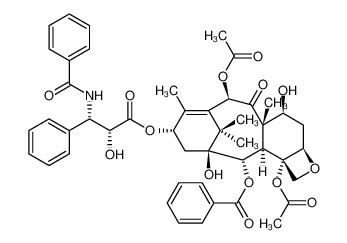

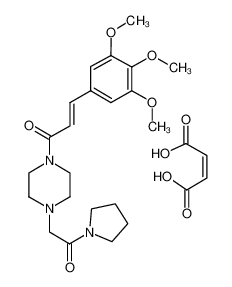
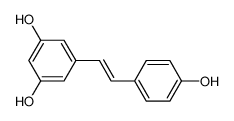

-
-

-
-
-

-
-
-

-
-
-

-
-
-

-
-
-

-
-
-

-
-
-

-
-
-

-
-
-

-
More Suppliers>>Hangzhou J&H Chemical Co., Ltd.
CHINA
Purity: 98%
Lead Time: 14 Day(s)
Price: -
Henan Coreychem Co.,Ltd
CHINA
Purity: 0.98%
Lead Time: 3 Day(s)
Price: -
Hangzhou DayangChem Co., Ltd
CHINA
Purity: 97%
Lead Time: 7 Day(s)
Price: -
Skyrun Industrial Co., Limited
CHINA
Purity: 99%
Lead Time: 7 Day(s)
Price: -
Hubei Salary Chemical Co., Ltd.
CHINA
Purity: 56%
Lead Time: 3 Day(s)
Price: Min $4.5 /
Santa Cruz Biotechnology, Inc.
UNITED STATES
Purity: 96%
Lead Time: 10 Day(s)
Price: Min $28 /mg
Xi'an Jiaboying Biological Technology Co., Ltd.
CHINA
Purity: 99%
Lead Time: 3 Day(s)
Price: -
Molchemical
CHINA
Purity: 96%
Lead Time: 7 Day(s)
Price: -
Chongqing Sipunasi Technology Co., Ltd
CHINA
Purity: 99%
Lead Time: 0 Day(s)
Price: -
Chengdu SinoStandards Bio-Tech Co.,Ltd.
CHINA
Purity: 98%
Lead Time: 7 Day(s)
Price: -